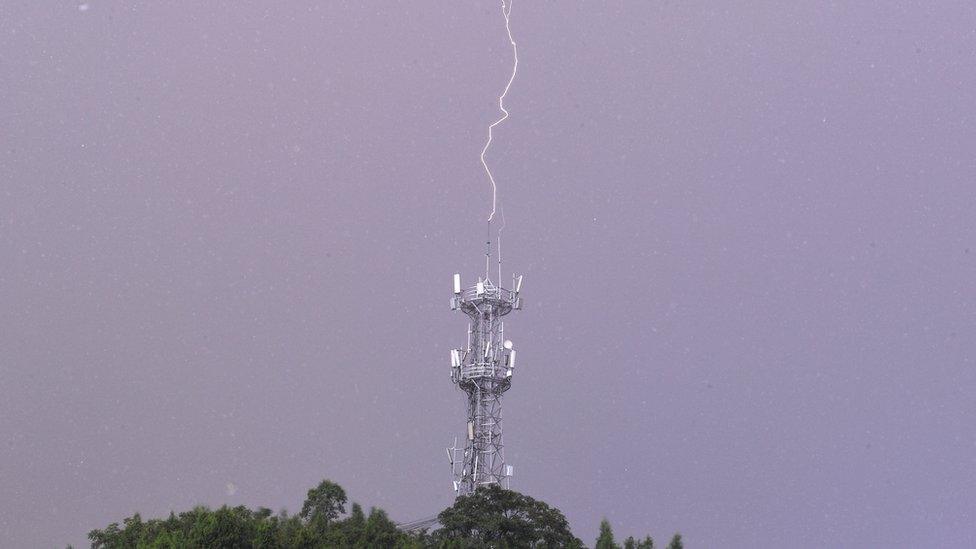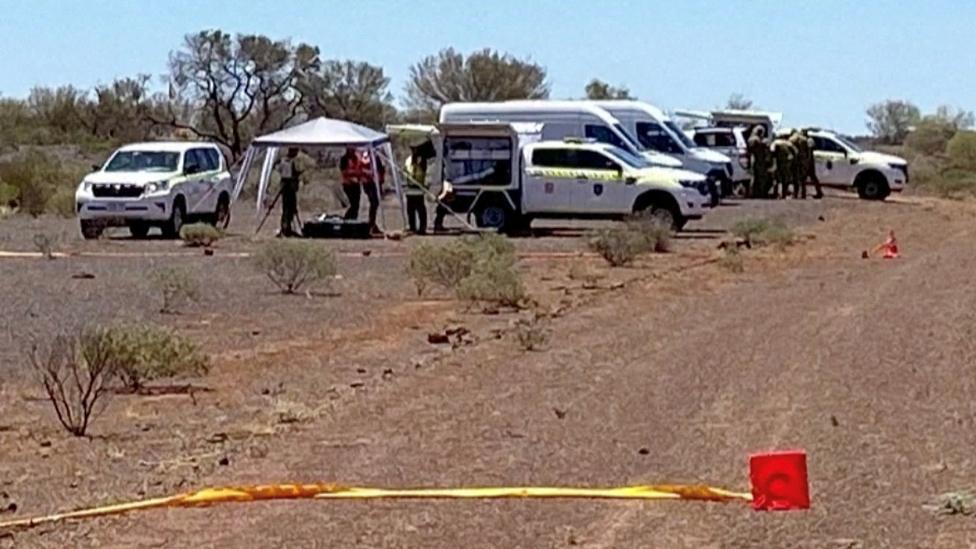Serbia-Croatia border arrests over radioactive material found in car
- Published

Until recently, radioactive heads on rods were widely believed to attract lightning bolts
Three Croatian nationals have been arrested in Serbia after radioactive material was discovered in their car, Serbian officials say.
They were about to enter Croatia on Saturday when scanners detected a "serious amount" of radiation.
A subsequent search of an Audi car revealed the head of a radioactive lightning rod in the spare tyre slot of the boot, Serbian customs said.
Such rods were widely used in the past, but are now largely being dismantled.
The incident occurred at the Bezdan border crossing near the town of Sombor on Saturday at 20:30 (19:30 GMT).
A statement by Serbian customs authorities said stationary monitors had sounded as the car was being checked before exiting the country. A subsequent search revealed the the head of the lightning rod, as well as a device for measuring the composition of the metal.
A hand-held device used for measuring radiation ionisation had reacted to that substance, it added.
There has been no detail about the amount of radioactive material involved or its potential impact, but workers at the border crossing were ordered to discard their clothing and undergo medical checks as a precaution, Serbian media report.
Experts from Serbia's Vinca nuclear research institute have reportedly moved the head of the lightning rod to a safer place.
Hundreds of thousands of radioactive lightning rods were installed worldwide in the past few decades, according to the International Atomic Energy Agency (IAEA), in the belief that they enhanced the chance of lightning strikes hitting the rods and not nearby targets.
In a report last year, the IAEA said that "no convincing scientific evidence has been produced to demonstrate increased efficacy" and many countries had decided to stop the production of these devices. Some have started to remove the radioactive sources from the lightning rods that have already been installed.
However, the report suggested most of the rods were installed more than 50 years ago, when nuclear safety standards had not been introduced.
No reliable data existed about their overall numbers or location, it added, let alone the state of wear and tear or decay of the protective cases or the radioactive material contained inside. It highlighted cases where rod heads were sold as scrap metal by traders unaware of their existence or danger.


You may also want to read:
Related topics
- Published1 February 2023

- Published4 February 2023
